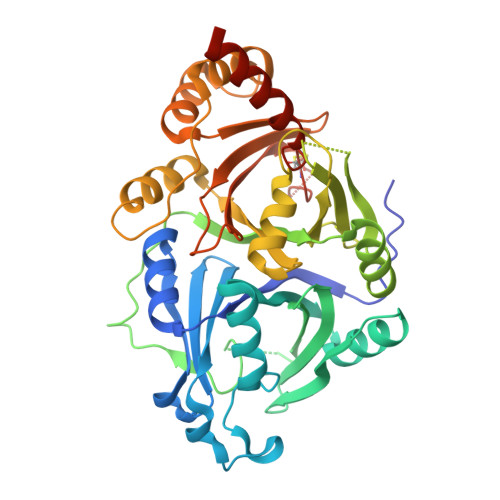Reinforcement learning-based generative artificial intelligence for novel pesticide design.
Yang, R., Li, B., Dong, J., Cai, Z., Lin, H., Wang, F., Yang, G.(2025) J Adv Res
- PubMed: 40032026
- DOI: https://doi.org/10.1016/j.jare.2025.02.030
- Primary Citation of Related Structures:
8XLX - PubMed Abstract:
Pesticides play a pivotal role in ensuring food security, and the development of green pesticides is an inevitable trend in global agricultural progress. Although deep learning-based generative models have revolutionized de novo drug design in pharmaceutical research, their application in pesticide research and development remains unexplored. This study aims to pioneer the application of generative artificial intelligence to pesticide design by proposing a reinforcement learning-based framework for obtaining pesticide-like molecules with high binding affinity. This framework comprises two key components: PestiGen-G, which systematically explores the pesticide-like chemical space using a character-based generative model coupled with the REINFORCE algorithm; and PestiGen-S, which combines a fragment-based generative model with the Monte Carlo Tree Search algorithm to generate molecules that stably bind to the specific target protein. Experimental results show that the molecules generated by PestiGen have superior pesticide-likeness and binding affinity compared to those generated by existing methods. In addition, we employ an active learning strategy to reduce the false-positive rate of the generated molecules. Finally, through collaboration with domain experts, we successfully designed a novel 4-hydroxyphenylpyruvate dioxygenase inhibitor (YH23768) with favorable enzyme inhibition and herbicidal potency. This proof-of-concept study highlights the utility of PestiGen as a valuable tool for pesticide design. The web server based on the model is freely available at https://dpai.ccnu.edu.cn/PestiGen/.
- State Key Laboratory of Green Pesticide, International Joint Research Center for Intelligent Biosensor Technology and Health, Central China Normal University, Wuhan 430079, PR China.
Organizational Affiliation:


















